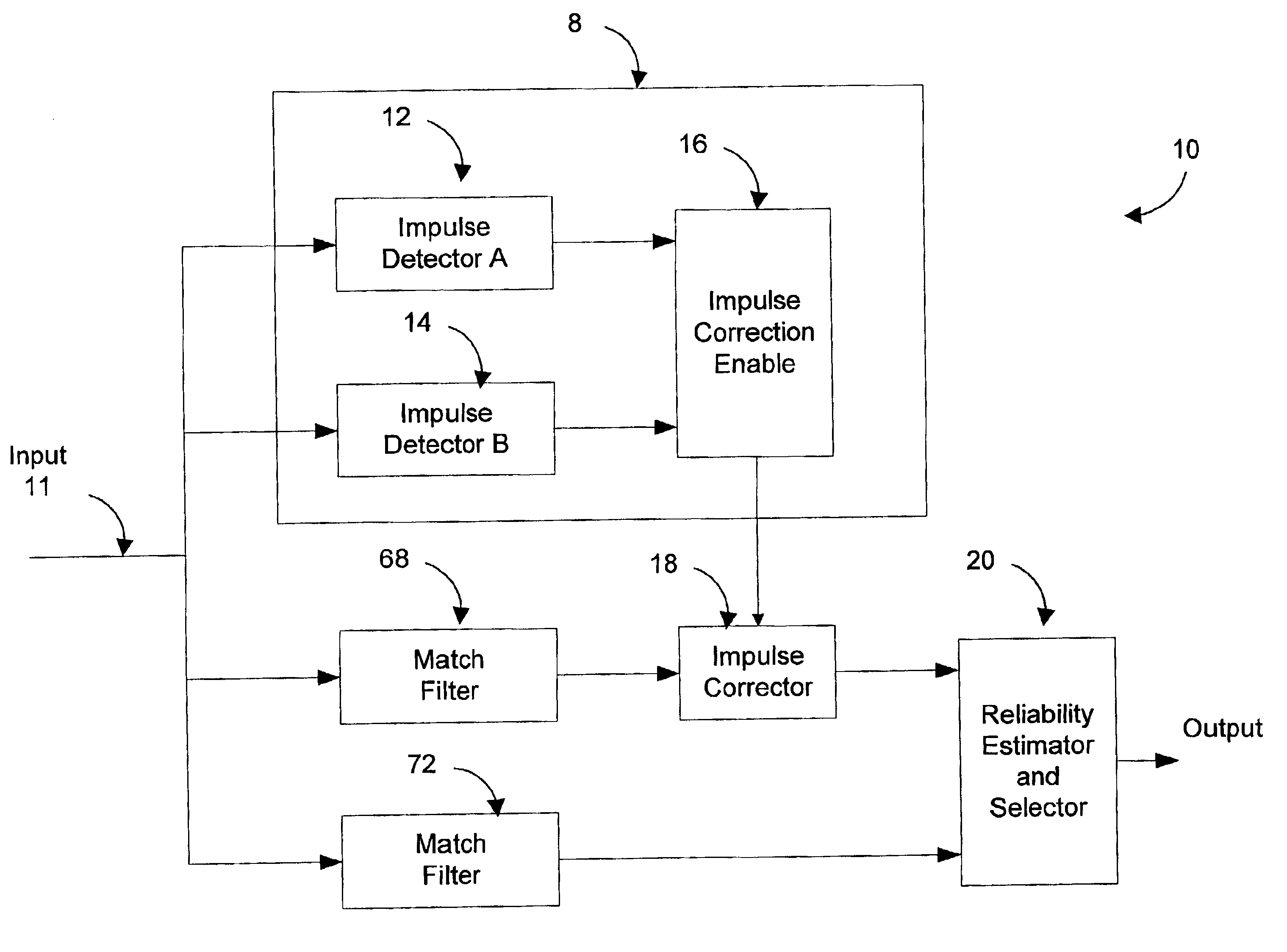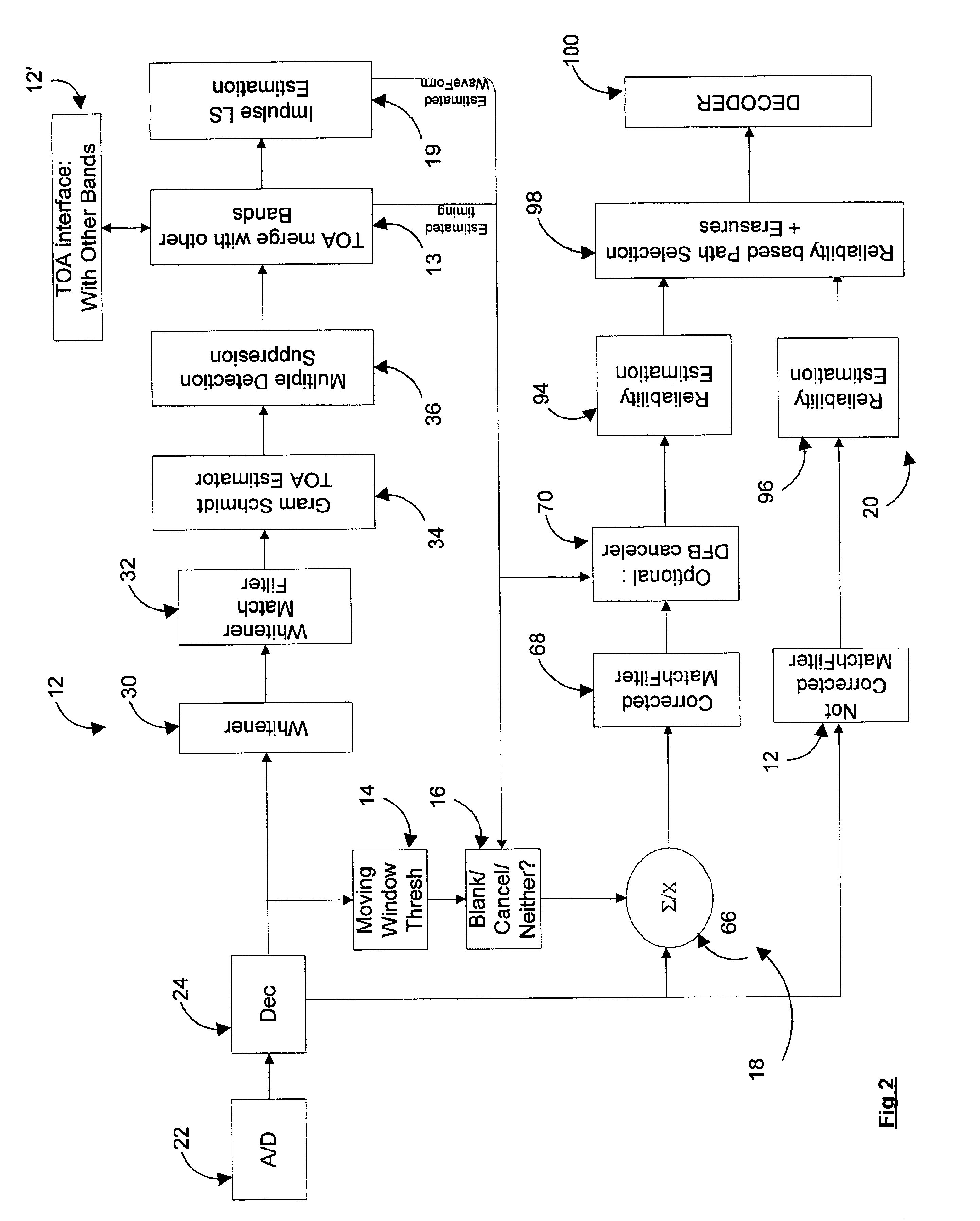Method and system for detecting, timing, and correcting impulse noise
a technology of impulse noise and correction method, applied in the field of receiving apparatus for data communication system, can solve the problems of affecting the quality and rate of data transmission, affecting the integrity and reliability of such data transmission, and ignoring the compensation of impulse/burst noise, so as to solve the vulnerability of impulse noise, detect and cancel the generated noise, and the effect of less complex and expensiv
- Summary
- Abstract
- Description
- Claims
- Application Information
AI Technical Summary
Benefits of technology
Problems solved by technology
Method used
Image
Examples
Embodiment Construction
[0029]Turning to FIG. 1, there is shown a block diagram of an impulse detector and corrector system 10 according to the invention. The received input communication signal 11, which can be a single carrier signal or a multi-carrier signal, is input to an impulse detector 8, which preferably comprises two or more separate impulse detectors, 12, 14, each of which uses a different impulse detection scheme. The outputs of the impulse detectors 12, 14 are provided to an impulse correction enable module 16. The signals produced by the impulse detectors 12, 14 indicate when an impulse has been detected and may contain information about the detected impulse itself. The correction enable module 16 uses the information contained in the impulse detection signals to determine when an impulse is present and signals via its output that impulse correction is required.
[0030]In the preferred embodiment, the outputs of two or more separate impulse detectors are used to determine the timing and possibl...
PUM
 Login to View More
Login to View More Abstract
Description
Claims
Application Information
 Login to View More
Login to View More - R&D
- Intellectual Property
- Life Sciences
- Materials
- Tech Scout
- Unparalleled Data Quality
- Higher Quality Content
- 60% Fewer Hallucinations
Browse by: Latest US Patents, China's latest patents, Technical Efficacy Thesaurus, Application Domain, Technology Topic, Popular Technical Reports.
© 2025 PatSnap. All rights reserved.Legal|Privacy policy|Modern Slavery Act Transparency Statement|Sitemap|About US| Contact US: help@patsnap.com



